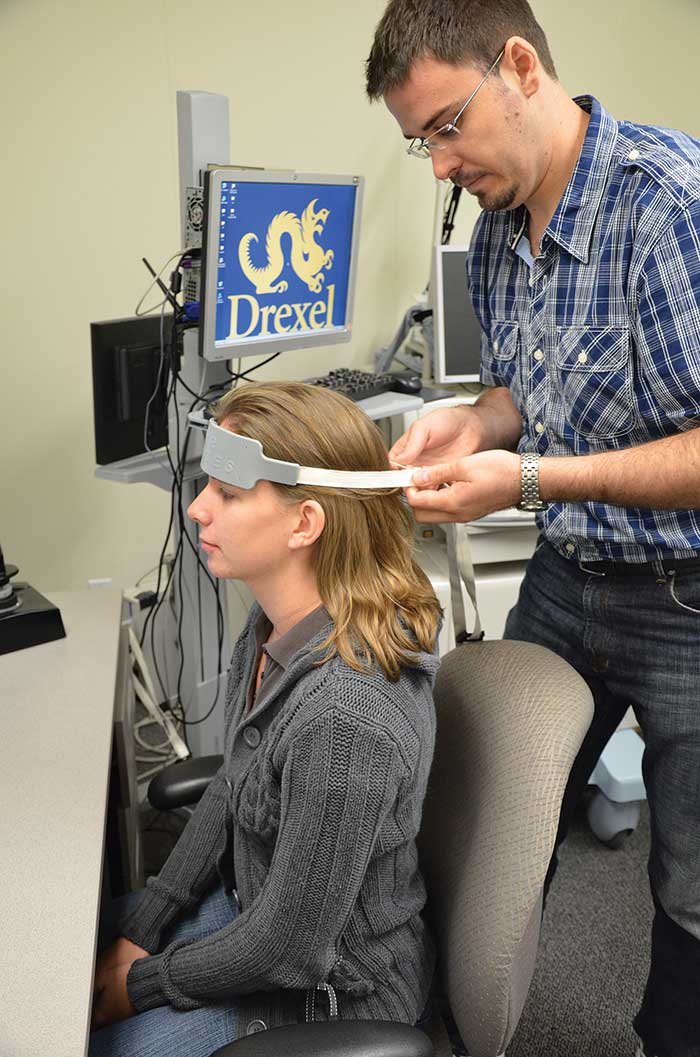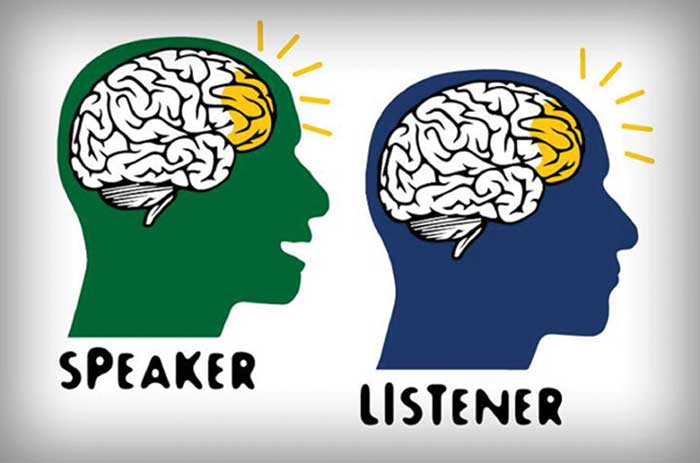Communication is a part of our everyday lives, but so often falls on deaf ears. Finding scientific ways to measure whether a target audience understands the message conveyed has baffled many a researcher as they look for methods to improve the exchange of information when the “message” isn’t getting across.
Biomedical engineers at Drexel University and psychologists at Princeton University think they have a solution in the form of a wearable brain imaging device that displays brain activity between people verbally interacting. The portable functional near-infrared spectroscopy (fNIRS) system uses light to measure brain activity and is worn like a headband.

Hasan Ayaz placing a prefrontal fNIRS sensor band on a volunteer. Courtesy of H. Ayaz, Drexel University.
For the Drexel/Princeton study, a native English speaker and two native Turkish speakers told an unrehearsed, real-life story in their native language. The audio was recorded and their brains were scanned using fNIRS. Fifteen English speakers then listened to the recordings, in addition to a story that was recorded at a live storytelling event, wearing the fNIRS headbands.
The fNIRS targeted the prefrontal and parietal areas of the brain; these are cognitive and higher order areas involved in a person’s capacity to discern the beliefs, desires and goals of others.
The researchers hypothesized that a listener’s brain activity would correlate only with the English speaking storytellers. Their hypothesis was proven correct as they discovered that when the fNIRS measured the oxygenation and deoxygenation of blood cells in the test subject’s brains, the listener’s brain activity matched that of the English speaker, but not that of the Turkish speakers.
The study also compared the fNIRS results with data from a similar study that had used functional magnetic resonance imaging — fMRI. The results correlated with the previous study.
Hasan Ayaz, an associate research professor in Drexel’s School of Biomedical Engineering, Science and Health Systems, told Photonics Media the new research supports fNIRS as a viable tool to study brain-to-brain coupling that occurs when people listen to each other.
“This study demonstrates that we can measure successful information exchange between individuals during verbal communication,” he said. “Since fNIRS can be miniaturized and become wireless, the future applications can take place anywhere natural verbal communication is involved, from classroom to clinical settings.”

A cartoon image of brain ‘coupling’ during communication. Courtesy of Drexel University.
Traditional brain imaging methods have limitations. In particular, fMRI requires subjects to lie down motionless in a noisy scanning environment. With this kind of setup, it is not possible to scan the brains of multiple individuals who are speaking face-to-face.
“We live in a social world where everybody is interacting,” said Ayaz. “And we now have a tool that can give us richer information about the brain during everyday tasks, such as natural communication, that we could not receive in artificial lab settings or from single brain studies.”
The research found that a listener’s brain not only mirrors a speaker’s brain, it established that higher coupling occurs with better understanding. When there is a language barrier, as was the case in this study, the coupling is weak.
While the fNIRS won’t be breaking any language barriers, it could pave the way to helping people communicate more successfully.